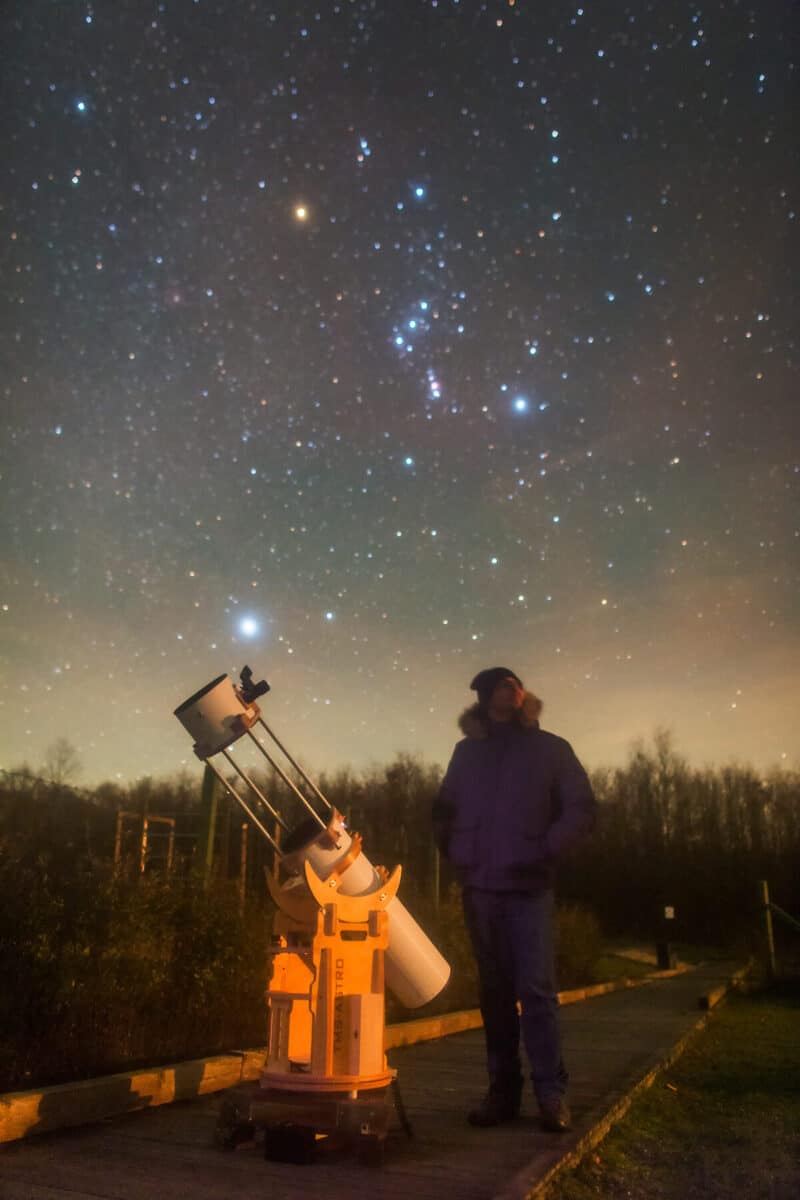Rafael Schmall is an astrophotographer from Hungary who does it all – landscape, deep sky, solar and lunar astrophotography.
We caught up with him to understand how he captures images like this:
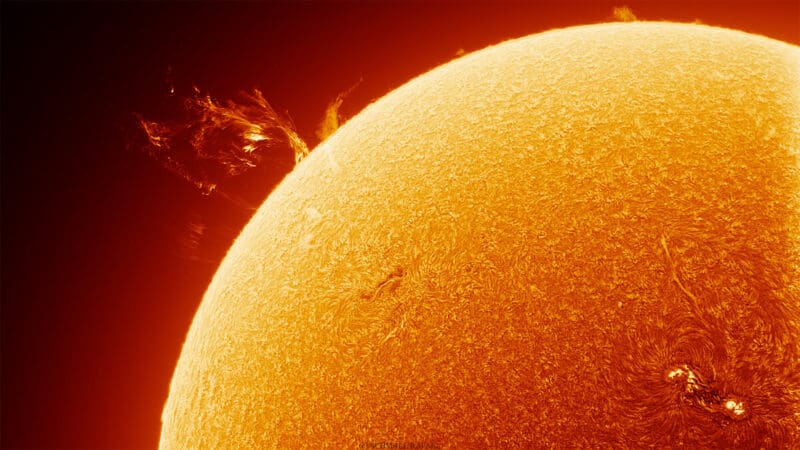
What’s your current astrophotography focus?
The weather here in Hungary is really bad, so lately I’ve been working on a full remote control system for deep sky photography.
This is so that at some point in the future I can install an observatory in a clearer (and darker) location.
Fortunately, the sun shines a lot during the day, which is why I am trying different solar telescopes (H-alpha / Herschel prism + Continuum filter).
I’m also experimenting with an easy-to-build mirrored solar telescope system.
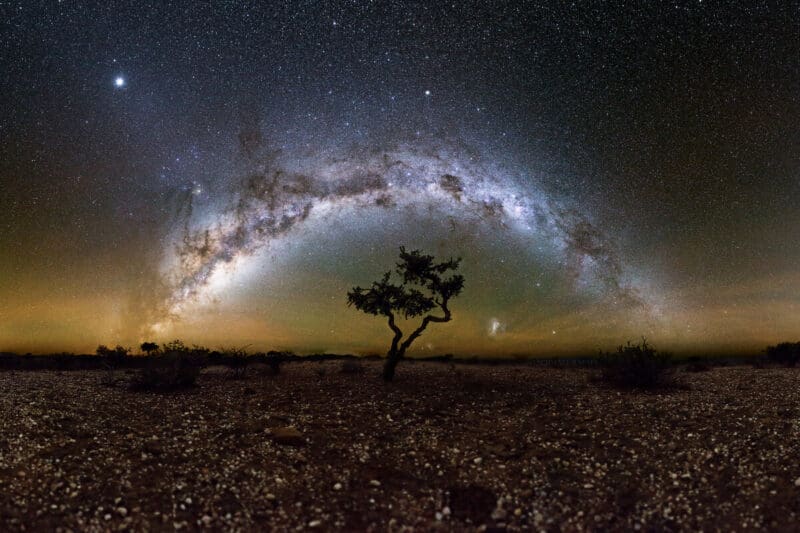
How do you plan your imaging?
I work in the Zselic Park of Stars, which is located in one of the places with the darkest sky in the country.
The Zselic became a designated dark sky park in 2009 – this was the first time in Europe.
In this area, there are plenty of opportunities for both deep-sky photography and astro-landscape photography.
With every astrophoto, I try to take the composition into account, either on the spot, or, in the case of deep sky, I set the desired composition with a photo designer in N.I.N.A.
There are also certain rules that must be followed. For example, when photographing the sun, protuberances can be photographed for a maximum of 30 seconds, or shutter speed when using telescopes with a certain f-number.
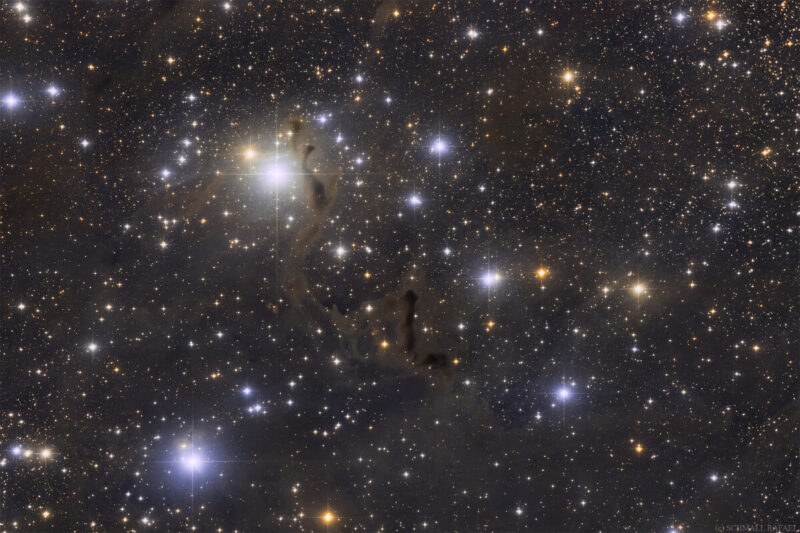
What equipment do you use?
For deep-sky photos, I use a 200/800 rebuilt Newton telescope (a modified Sky-Watcher Quattro 200P), in which all elements are individually manufactured, except for the optical elements.
The telescope is mounted on a V-belt EQ6 mechanism (a modified Sky-Watcher EQ6-R Pro), on an inclined pier instead of a tripod.
It’s true that the tilted column doesn’t make much sense in today’s remote-controlled world, but it did make sense that I designed it, build it, etc. It was also an experience!
This year I switched from the color ZWO ASI294MC Pro camera to the monochrome ZWO ASI294MM with Antlia V pro LRGB filters.
I hope I can upgrade to the ZWO ASI2600MM sometime!
I also have a modified Canon 6D DSLR camera, and before that I had a Canon 1100D.
This year’s plans also include the completion of a custom-built mirrored solar telescope.
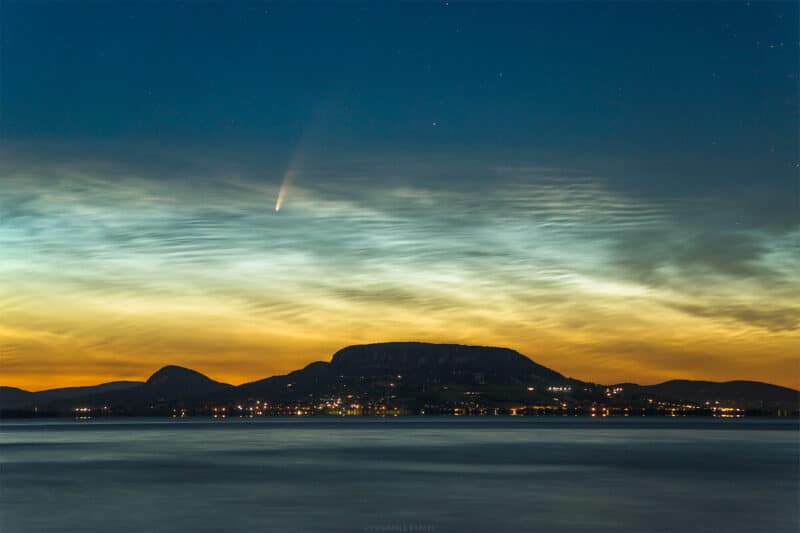
What software do you use for post-processing?
I used to process deep sky photos with DSS and Photoshop.
Nowadays I only use SIRIL but I would like to learn how to use Pixinsight.
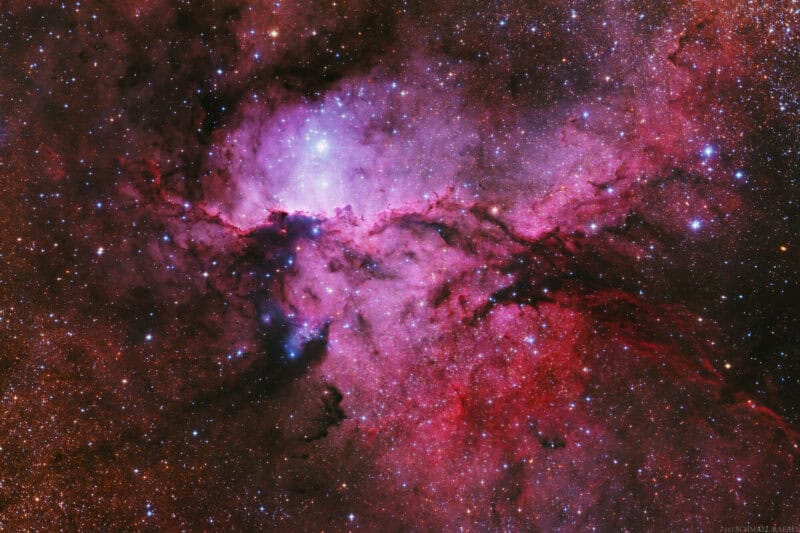
“Look at the photos of professional photographers and their technical data.”
What are your tips for others to improve in astrophotography?
Popular astrophoto sites like Astrobin, are very good because you can see the technical data there. There are also forums, which you can learn a lot by reading.
Many YouTube channels provide valuable information and aids for astrophotography.
I would recommend beginners to beware of “excessive / AI” images.
Look at the photos of professional photographers and their technical data, and even to ask them for help.
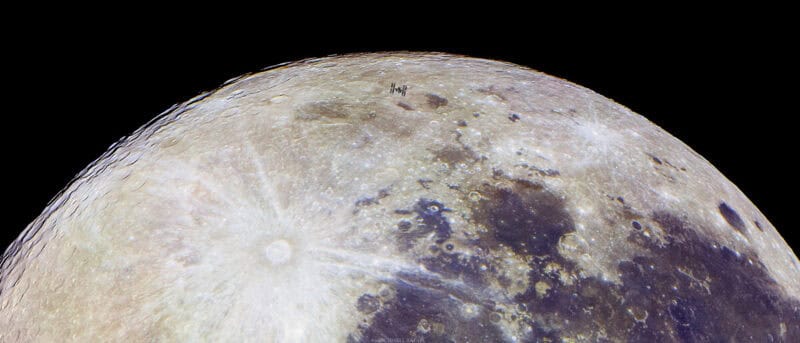
“There are times when the most unexpected thing becomes a winner among thousands of captures.”
About You – Rafael Schmall
One of my proudest moments was winning first place in the Astronomy Photographer of the Year 2020 People and Space category for this image:
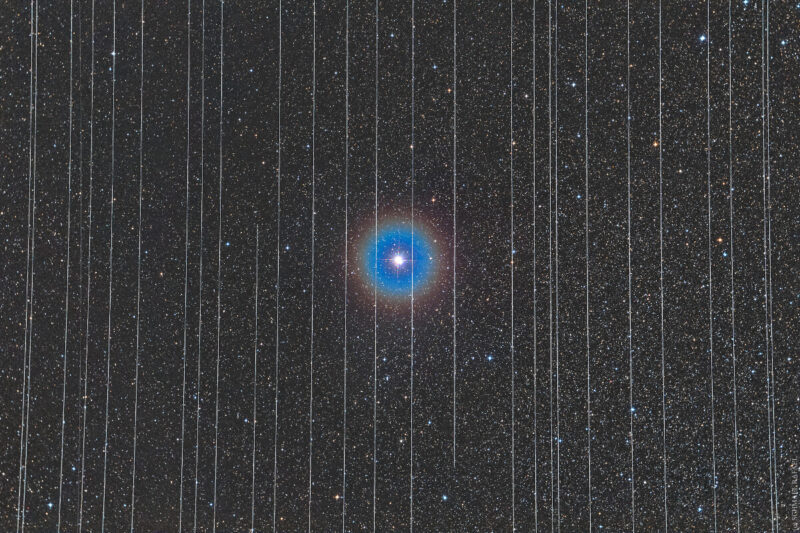
I was photographing the Starlink satellite fleet as they crossed the sky like bright dots. I thought how interesting it would be to make a shot similar to prison bars.
This was on Christmas Eve between two cookies 🙂
It took a few minutes to make the capture, but I’ve been seeing it again since then in various scientific journals, etc.
There are times when the most unexpected thing becomes a winner among thousands of captures.
You can easily find me on:
It depends on the weather when I upload 🙂
